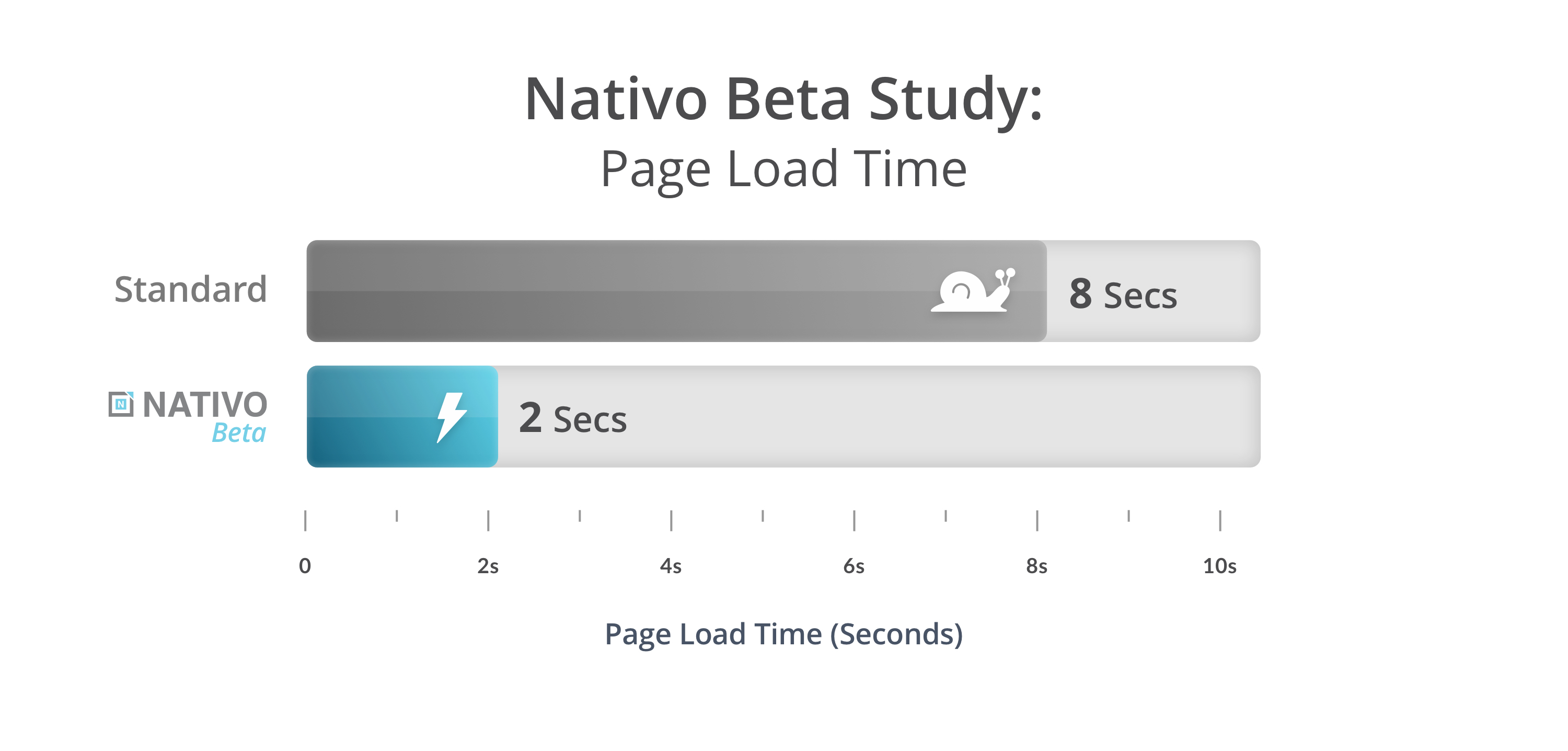Slow death: Latency is a weight dragging down publishers’ bottom lines

by Chris LoRusso, svp publisher solutions at Nativo
These are challenging times for publishers. In addition to dealing with ad blocking, fraud, viewability, GDPR and changes to the Facebook algorithm, savvy publishers are also addressing challenges around website latency and what it means for their bottom lines when their sites perform slowly. Website latency is a silent but efficient UX killer, siphoning off crucial audience and ad impressions.
Every millisecond counts
Latency is meaningful. The success of publisher monetization efforts is dependant on users staying on the site long enough to see and engage with ads. Sites that render pages slowly, become unresponsive due to ad load, or constantly reflow their layout due to delayed rendering of ads will lose money due to low viewability, high user abandonment, and, eventually, ad blocking.
A 2017 study from Akamai found that a 100-millisecond delay in website load time led to a 7 percent drop in conversion rates. Meanwhile, while only 9.6 percent of users bounce when encountering an average page load time of 2 seconds, bounce rate skyrockets to 32.3 percent when page load times climb to 7 seconds.
There are many contributing factors to slow page loads, the proliferation of third-party tags not being the least of them. An informal accounting by Nativo shows that the typical open website has anywhere between 40 and 80 third-party tags running on it. This third-party code is notorious for slowing pages to the point where users lose patience and bounce. Heavy adoption of header wrapper tech in the name of increased yield is a major culprit, and an example of publishers creating one problem to solve another.

Publisher heal thyself
Ever the frenemies to open web publishers, Google and Facebook are aware of latency problems plaguing UX — and unsurprisingly have handily turned it to the advantage of their own proprietary standards.
Google has gotten its piece of the action via Google AMP, which gives publishers a simple way to create webpages that load almost instantaneously for users. In addition to restricting page design, article recirculation and the type of ad units that publishers can use, AMP has been criticized by numerous publishers for loading ads more slowly than content, meaning publishers are making notably less money per page view on AMP than on their own sites.
Meanwhile, Facebook’s Instant Articles allow publishers to publish their content for consumption on Facebook in a fast, immersive format. But like AMP, the monetization of such pages has been troublesome for publishers — so bad, in fact, that The New York Times, Forbes, Hearst and others stopped using Instant Articles altogether, as previously reported by Digiday.
Poor monetization aside, publishers on the open web struggle to compete with the user experiences offered by closed platforms like Google and Facebook, and might be better served concentrating on improving user experience themselves. Emerging “pubtech” offers new site-serving paradigms to accelerate sites on the open web, improve monetization and recover inventory by avoiding ad blocking without needing to replace their existing CMS infrastructure. At Nativo, we are beta testing a publisher solution that significantly cuts page load times, resulting in recapturing more than 40 percent in lost inventory. This tech is a fundamental shift in how websites are served and therefore is not weighed down by legacy ad tech. Preliminary testing is more than promising, showing up to an 80 percent reduction in page load time for some sites.

So, despite all the challenges facing publishers today, the future remains bright for this indispensable piece of the digital advertising landscape. The open web is where advertisers win hearts and minds. Engagement and consideration that regularly occurs on the pages of open web publishers bridges the gap between awareness and action from within the walls of paid social and search. And by addressing latency with a new paradigm in site serving, publishers on the open web can unhitch their sites from the plow, choosing instead to pave a fast lane for the consumer purchase journey.
More from Digiday

Why the New York Times is forging connections with gamers as it diversifies its audience
The New York Times is not becoming a gaming company. But as it continues to diversify its editorial offerings for the digital era, the Times has embraced puzzle gamers as one of its core captive audiences, and it is taking ample advantage of its advantageous positioning in the space in 2024.

Why B2B marketers are advertising more like consumer brands to break through a crowded marketplace
Today’s marketing landscape is more fragmented than ever. Like consumer brands, business brands are looking to stand out in a crowded and competitive marketplace, making marketing tactics like streaming ads, influencers and humorous spots more appealing.

As draft puts WNBA in spotlight, the NBA is speeding up ballplayers’ transition to creators
The NBA’s star athletes are its greatest marketing asset.





